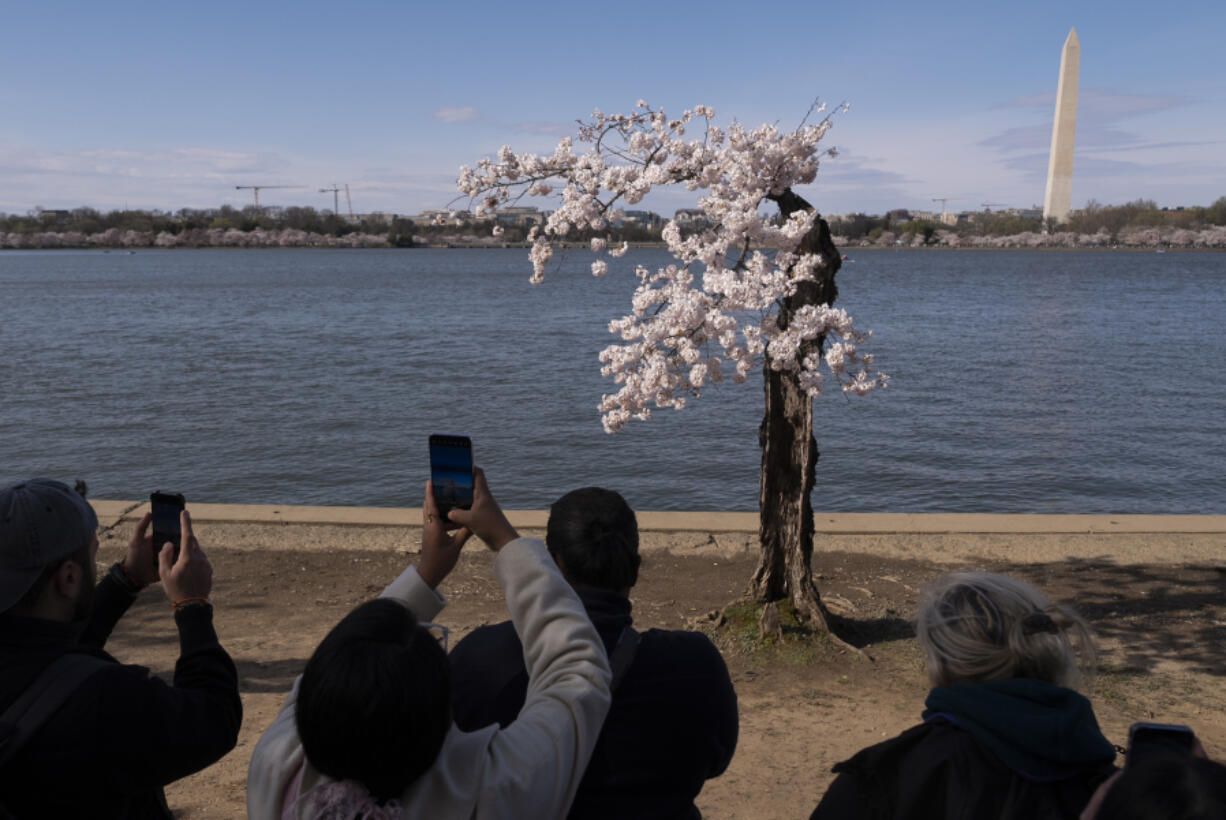WASHINGTON, D.C. — The sun is setting on Stumpy, the gnarled old cherry tree that has become a social media phenom. This year’s cherry blossom festivities in Washington will be the last for Stumpy and more than 100 other cherry trees that will be cut down as part of a multiyear restoration of their Tidal Basin home.
Starting in early summer, crews will begin working to replace the crumbling seawall around the Tidal Basin, the area around the Jefferson Memorial with the highest concentration of cherry trees. The work has been long overdue, as the deterioration — combined with rising sea levels — has resulted in Potomac waters regularly surging over the barriers.
The twice-daily floods at high tide not only cover some of the pedestrian paths; they also regularly soak some of the cherry trees’ roots. The $133 million project to rebuild and reinforce the seawall will take about three years, said Mike Litterst, National Park Service spokesman for the National Mall.
“It’s certainly going to benefit the visitor experience, and that’s very important to us,” he said. “But most of all, it’s going to benefit the cherry trees, who right now are every day, twice a day, seeing their roots inundated with the brackish water of the Tidal Basin.”
Litterst said entire stretches of trees to the water, as wide as 100 yards, have been lost and can’t be replaced “until we fix the underlying cause of what killed them in the first place.”
Stumpy remains alive, if in rough shape.
Plans call for 140 cherry trees — and 300 trees total — to be removed and turned into mulch. When the project is concluded, 277 cherry trees will be planted as replacements.
The mulch will protect the roots of surviving trees from foot traffic and break down over time into nutrient-rich soil, “so it’s a good second life” for the trees being cut down, Litterst said.
1.5 million expected at Cherry Blossom Festival
The National Cherry Blossom Festival is widely considered to be the start of the tourist season in the nation’s capital. Organizers expect 1.5 million people to view the pink and white blossoms this year, the most since the coronavirus pandemic. Large numbers of cherry blossom fans have already been drawn to the area as the trees entered peak bloom on March 17, several days earlier than expected.
Stumpy became a social media star during the pandemic fever dream of 2020. Its legacy has spawned T-shirts, a calendar and a fanbase. News of Stumpy’s final spring has prompted people to leave flowers and bourbon and had one Reddit user threatening to chain themselves to the trunk to save the tree.
The good news on Stumpy is that the National Arboretum plans to take parts of the tree’s genetic material and create clones, some of which will eventually be replanted at the Tidal Basin.
The regular flooding at the Tidal Basin — sea levels have risen about a foot since the the seawall was built in the early 1990s — is just one of the ways climate change has impacted the cherry trees. Rising global temperatures and warmer winters have caused peak bloom to creep earlier in the calendar.
This year’s peak bloom, when 70 percent of the city’s 3,700 cherry trees will be flowering, was originally predicted to start around today but ended up being declared on March 17. By comparison, the 2013 peak bloom began on April 9. Leslie Frattaroli, national resources program manager for the Park Service, told The Associated Press in February that peak bloom could regularly come in the middle of March by 2050.



